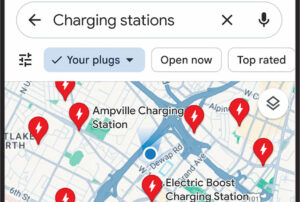Labor group seeks relief for workers as LRT, MRT poised to raise fares

A LABOR group said workers need relief more urgently than the capital’s light rail systems, whose proposed fare hikes have been billed as a means of helping them recover from losses incurred during the pandemic.
“It was reported that the fare hike is being considered to offset the losses incurred by the train systems due to the pandemic. However, the Federation of Free Workers (FFW) asserts that workers should not be made to bear the cost of these losses,” the FFW said in a statement.
Metro Manila’s commuter railway operators are the Manila Metro Rail Transit (MRT) and Manila Light Rail Transit System (LRT). LRT Line 1 is seeking a fare increase of P17-P44 from the current P11 to P30. LRT Line 2 is seeking stored value fare increases of P14-P33 from the current P12-P28, while raising the single-value ticket fare by P15-P35 from the current P15-P30.
The MRT proposed a fare hike of P4-P6.
“The proposed fare hike will impose a heavy burden on workers who are already struggling to make ends meet due to the high cost of living,” FFW Vice-President Jun Mendoza Ramirez said.
The FFW is asking the Department of Transportation (DoTr) and the Department of Labor and Employment (DoLE) “to prioritize the welfare of workers and find solutions that do not involve a fare hike.”
Transportation Science Society of the Philippines Ex-President Rene S. Santiago said that the price increase is expected, but he said the bigger issue is how much the increase will be.
“To reduce subsidies, rail transit fares have to go up. Only urban commuters benefit from subsidies to rail, but the majority of Filipinos (are not) and they are poorer. What the government has failed to do, for decades, is to rebalance fares among buses, jeepneys, trikes, taxi in terms of value-for-money,” Mr. Santiago said.
The government needs to establish a responsive fare collection system just like in other countries, according to Libra Konsult, Inc. Senior Adviser Nigel Paul Villarete.
“The sooner the government can come up with the correct Service Contracting and Fare Collection systems, the sooner our mobility woes will come to pass,” Mr. Villarete added.
The increase in fares reflects the rising price of fuel and electricity, analysts said.
“The public never likes price hikes. No different for fare hikes. But it is necessary, especially for rail because it is most capital intensive among all transport modes, import dependent, and (endures the most delayed fare adjustments),” Mr. Santiago said.
“The rising cost of living is impacting almost all sectors and it was only a matter of time that fares would need to be adjusted to cover expensive energy costs,” ING Bank N.V. Manila Senior Economist Nicholas Antonio T. Mapa said in a Viber message.
“The increase in fares however is an example of second round effects and could feed into more price pressures in the coming months,” he added.
“Personally, I think fare hikes are the least of our concerns. What’s crucial and exigent is the bad state of our mobility sector … If DoTr remains clueless in addressing mobility, people will continue to suffer, and so will the Philippine economy,” Mr. Villarete said.
“Fare rates should not even matter because transportation has always been and will always remain beneficial with excellent economic returns,” he added.
On Friday, the Department of Transportation held a public hearing for the proposed fare hikes, with petitioners Light Rail Manila Corp. and Light Rail Transit Authority pitching the fare hikes as a means of financing improvements and rehabilitation of their facilities.
The fare hike is also expected to “unburden” the National Government, which provides a P1-billion subsidy to MRT-3. MRT-3 General Manager Federico Canar, Jr. said these funds can be realigned to other government priority projects. — Justine Irish D. Tabile




